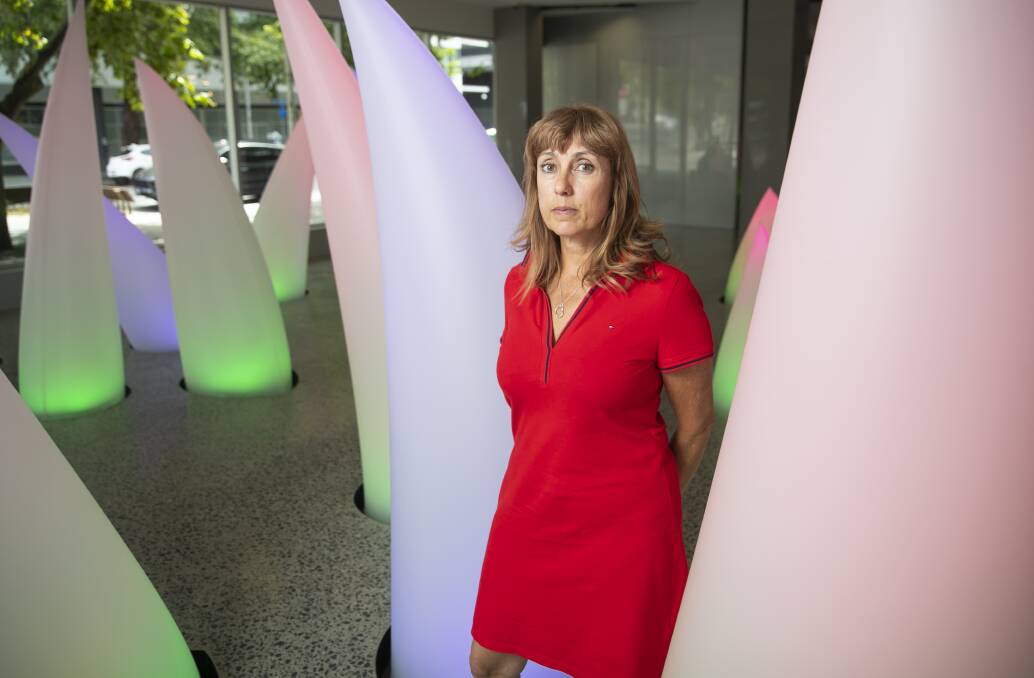
In a city that's changing as fast as Canberra, new buildings seem to be appearing and others disappearing around every corner.
But for one city corner, a set of beloved lights will shortly go out, to be replaced by who knows what.
Robert Foster's Ossolites in the foyer of the ActewAGL building on Bunda Street have been gently blinking and changing colour all day, every day, for 12 years now - long enough to be part of the inner city's permanent landscape.
But in a few weeks' time, the award-winning lighting installation, called The Journey and commissioned by ActewAGL in 2010 to mark its 10th anniversary, will be switched off and removed piece by piece.
It's the end of a lifespan for a work that has become an iconic part of Civic, and made even more so by Foster's tragic death in a car accident in 2016.
The colour-changing "Ossolites" of varying sizes, made of plexiglass and fixed into the concrete floor, are programmed to change colours in different sequences at different times of day, and also respond to movement.
Gretel Harrison, Foster's widow, recalls her husband spending three months inside the space, with the windows covered in black plastic, installing the work.
"It is bittersweet, because it is almost a kind of Canberra tourist attraction - whenever we have visitors, we always bring them here to the space to show them," she said.
"Everybody's always fascinated by the lights, and the changing of the colours and the amazement of so many different colours and sequences."
They are just one part of Foster's legacy, which includes the much-lauded F!NK Design company.
Ms Harrison, who still runs F!NK, said the Ossolites contract, which included an installation and maintenance process worth around $500,000, had always stipulated that the work had a 15-year lifespan, which would have taken it up to October 2025.
No plans were made beyond that date, but in the meantime, the work was customised to be built permanently into the space.
"They were designed to be built into the space, so the actual pans were laid down with the perspex around them, and then the concrete was laid over the top and then polished from there," she said.
"They kind of feel like they're within the space, they grow within the space. So to pull them all out and try and move them, particularly with Robert not here to advise on that, would be a very difficult thing to do.
"And I guess they are a family. Together, they are, as he called it, a journey. So it's when you walk in and out and through them, that's part of the experience."
But Canberra's own life trajectory doesn't always adhere to those of an artwork, no matter how beloved.
While The Journey was set to last 15 years, the building leased by ActewAGL was sold late last year.
A spokeswoman for ActewAGL said the new owners had different plans for the ground-floor space.
"We know The Journey is a much-loved Canberra art installation and this decision has been a very difficult one," she said.
"It has been a joy and a privilege to bring this amazing artwork to the people of Canberra. Unfortunately, a number of factors have converged including commercial lease arrangements and the fact that the Ossolites themselves are nearing the end of their lifespan which was always envisaged to be only up to 15 years.
"While ActewAGL initially explored options to relocate the artwork in its entirety, these did not prove viable and the decision has been made to decommission the sculpture.
"We are now considering the most appropriate way to decommission and commemorate this unique installation."
Ms Harrison said when she was first told that the Ossolites were going, the plan was to remove them within days.
But she managed to negotiate a reprieve, to allow as many people as possible to stop by the work and take a last look, and for a gathering of Foster's family and friends in the space before the installation is dismantled.
"We want his family up here to get to see it. I think, for them, it's also perhaps part of that grieving process of letting go and finally, another step of that finalisation," she said.
"A life span is a lifespan, and that's what the contract said, so it'll be cut short. But it is what it is, as sad as it is."
She said she hoped there would be some opportunity to at least recycle some of the material used to make the works.







